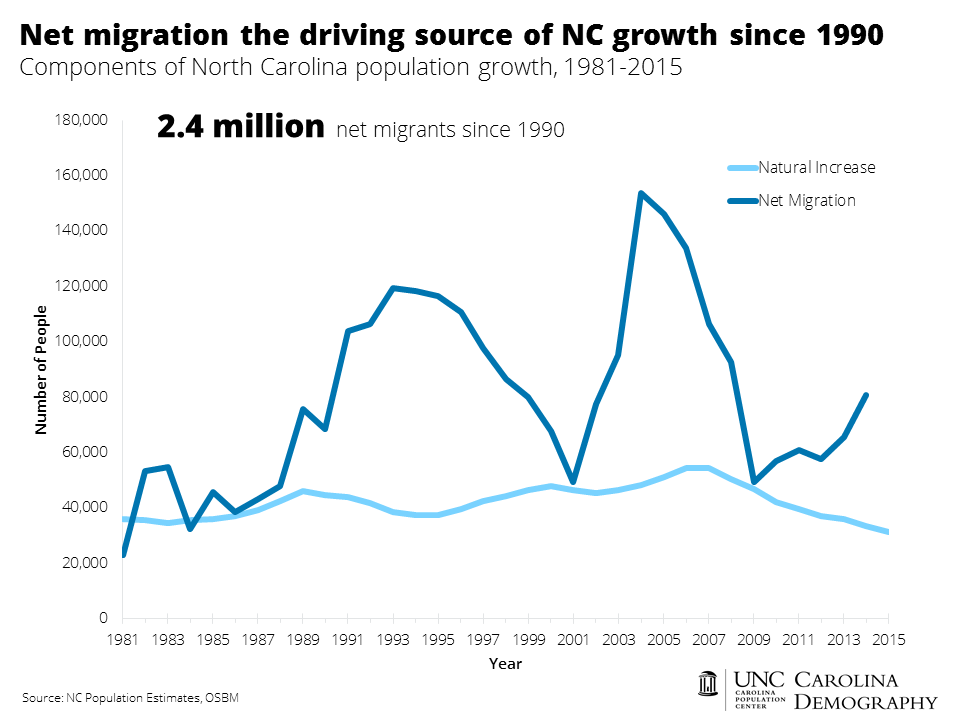Net migration is the main driver of NC growth
Published July 21, 2017
by Rebecca Tippett, UNC Carolina Population Center, July 12, 2017.
Population can grow—or decline—from one of two components of change: net migration (both domestic and international) or natural growth (births and deaths). Both components have contributed to North Carolina’s population growth.
Every year since 1980, North Carolina has had more births than deaths, meaning the population has grown from natural increase. The level of natural increase peaked in the late 2000s and has since declined significantly, reflecting the combined impact of fertility declines and population aging. Between 2015 and 2016, North Carolina experienced the lowest amount of natural increase recorded in the state since 1970.
While net migration levels declined after the Great Recession, they are beginning to rebound. Net migration has been the driving source of state population growth since 1990. Net migration will become an even more important part of the state’s future population growth over the next 20 years as population aging (increased deaths) and declining fertility rates (fewer births) continue to reduce total growth from natural increase.
The state demographer at the North Carolina Office of State Budget and Management projects that North Carolina will continue to attract net migrants. If past trends are an indication, these are individuals who will move here for educational and employment opportunities, as well as individuals who will move here to retire. Between 2000 and 2010, 68% of the state’s growth was due to net migration. By 2030-2035, nearly all of North Carolina’s growth—97.5%—is projected to be from net migration.









